#alien speculative biology
Text
SHOCK TROOPER LORE POST
aka speculative biology + how my shock troopers work (this post requires at least a bit of knowledge of Half Life/ Opposing Force lore)
First, an explanation of the relationship between the shock trooper/Race X homeworld and Xen.
Xen is a borderworld comprising of many floating islands and the wildlife that live upon them. Existing between dimensions, most creatures upon Xen inhabit it by accident; having been brought by portal storms and then unable to leave. Other creatures purposely fled to Xen due to an oppressive alien force, such as the Nihilanth, the Vortigaunts, and other unnamed/unknown races.
Some of these are Race X native species.
Black Mesa found out about Race X by chance through their teleportation experiments. Through very calculated and very risky missions, Black Mesa was able to obtain some specimens from the places where Race X resided, as well as Xen. Those scientists then took them down to the deepest parts of Black Mesa to study.
Black Mesa had been extracting crystals and wildlife from Xen for a while, these new species were kept secret to only those with the highest clearances. Still, they were not able to gather enough data before the Cascade; when all the alien species contained within Black Mesa were unleashed unto the world.
There is no determined number amount of Shock Troopers who reside on Earth, but we estimate that they are few and far between. Unlike Vortigaunts, most (if any) Shock Troopers who inhabit Earth nowadays are hostile towards both Humans and Combine alike. However, they prove to be smart and reliable allies when possible.
Most everything we know about Shock Troopers and the other species of Race X has been filled in by Shock Troopers themselves. The following information was gathered by a Shock Trooper who had joined a small team of rebels stationed in an abandoned quarry, then passed on to rebel scientists.
THE LIFE CYCLE

(Pictured: a murky healing pool with Spore Launchers)
On their homeworld and their other colonized planets, shock trooper young (called spore launchers) start their lives in pools. They are amphibious in nature and are able to crawl upon land with their tiny arms. The majority of their life, however, is spent in the pools.
Those familar with the borderworld Xen will recognize the healing pool that serves as their watery cradle. Starting from eggs, spore launchers hatch into these pools by the dozen and stay there for much of their adolescent lives. As more hatchlings leave their leathery eggs and inhabit the pools, the natural healing power lessens and lessens; until the pool itself is murky and stagnant.

(Pictured: infant Jack, Tiger, and Spot; my half life ocs)
Adult shock troopers do not care for their young outside of feeding (though it is a common occurrence that they don't get fed), which leads to their pools being a very hostile environment in their later stages. The natural properties of the pool that healed their wounds when they were newborn no longer nurse the bigger and older spore launchers. It is not uncommon for spore launchers to be aggressive towards each other at this time. There are often so many babies in one pool that feeding is foregone entirely; leading to a strictly cannibal diet among the young (though cannibalism is a regular occurrence in pools that are well supplied with food as well.).
Spore launchers come in the same colors as Shock Troopers do, though a Shock Trooper's patterns are often determined by how much nutrients that they collected as a baby. (Which often leads to the most complex and abundant patterns belonging to the most aggressive shock troopers. Or, at least, those that were aggressive in their infant stage.)
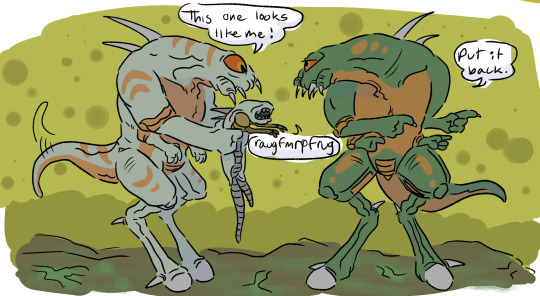
(Pictured: Two Shock Troopers and a baby Spore Launcher)
Spore Launchers turn into Shock Troopers via a sort of metamorphosis. Mature Spore Launches encase themselves in a cocoon of their own spit (often mixed with juices and remains of Spore Fruit, a main staple in their diet) and emerge as fully grown Shock Troopers. It is at this point that they assimilate into Shock Trooper culture and community.
Shock Trooper culture is very militaristic and nationalist. They are very competitive and engage in sparing as a sport, though they do not have much to bet but food and actions. (A Shock Trooper who lost a bet, for example, might have to do an unwanted chore or something embarrassing.) They do not have clothing or music, though the very few who have spent time on Earth have enjoyed wind and percussion instruments.
Shock Trooper relationships are different from human ideas of the concept. Romantic relationships are extremely rare (occurring only under rare circumstances and only with Shock Troopers from different colonies) and sexual ones are nonexistent. This means that, in human terms, most Shock Troopers are aromantic, and all of them are biologically asexual.
Instead of romantic relationships, some examples of high value relationships within the Shock Trooper community are mentor-mentees, tight knit friend groups (or squads, as they call them) and leader- follower groups. These relationships can be as complicated as human ones at times; as one Shock Trooper might see their bond as friendship, while the other Shock Trooper might see them as a leader-follower pair.
Despite their differences, it is a common belief in their homeworld communities that Shock Troopers are 'above' all other specie, including those they have domesticated. Some domesticated species found in and around communities are Shock Roaches, Pit Drones, and Voltigores (not to be confused with Vortigaunts). Shock Roaches are symbiotic insect-like weapons, while Pit Drones and Voltigores could be compared (if need be, as these creatures are nothing like Earth creatures) to very aggressive dogs and livestock. Their farming habits support their omnivorous diet; which consists of Spore fruit and Voltigores, as well as anything else they can get their hands on.


(Pictured: a Gene Worm)
While they seem primitive in many ways, Shock Troopers are one step above Black Mesa's scientists; they have mastered reliable teleportation. While they always have a Gene Worm to create teleportation portals, they were able to use Xen crystal constructs and Sprite-powered portals in order to create a reliable network. This network was how they were able to conduct their assault on Black Mesa and attempted colonization of Earth.
Gene worms are one of the final stages of Shock Trooper evolution. Much like ants or bees, Spore Launchers turn into Gene worms with the help of a special chemical jelly diet created in the throats of Shock Troopers. The fed Spore Launcher then feeds on anything it can fit in its mouth to support it's growth, then turning into their 'queen'.
The Gene Worm is the only reproductive being among their species; dedicating much of it's time to laying eggs. There are multiple Gene Worms across their home planet and other places, so not all Shock Troopers are directly related.
Interestingly enough, though Shock Troopers feed and care for the Gene Worm well into it's adulthood, it is not out of any obligation. Ants serve a queen. This queen serves its offspring. The Gene Worm is able to create and change the landscape around it to create a perfect home for Shock Troopers. This, mixed with their teleportation knowledge, has led them to successfully terraform and colonize one other planet besides their own.

(Pictured: a Gene Worm and a Tentacle)
The last example of the Shock Trooper life cycle are Tentacles. Like the Gene Worm, these creatures evolve from Spore Launchers who are fed a special diet. Unlike the Gene Worm, however, these Tentacles are made to the guards of Gene Worm nests and other important areas. Relatively blind, they attack their opponents using hearing to pinpoint their locations. Shock Troopers make sure to vocalize loudly while in their presence to ensure that the Tentacles will not mistake them for an enemy.
Shock Troopers are complicated and highly intelligent creatures who are yet untouched by the decimation of the Combine. Maybe, just maybe, they would make good allies in the future for the war against the Combine; if they knew what was at stake.
However, knowing the overall nationalistic culture of the Shock Troopers and their previous attempt to colonize Earth...probably not.
#half life#half life 2#half life alyx#half life opposing force#opposing force#speculative biology#spec bio#shock trooper#spore launcher#gene worm#alien speculative biology#alien oc#shock trooper oc#half life oc#my art#tjis is my first attempt at spec bio pls be nice!!!!!!!!!!#maybe ill make another post expanding onto these concepts a bit/ new concepts#I tried to stay true to the previous lore while still expanding upon them!#long post
81 notes
·
View notes
Text
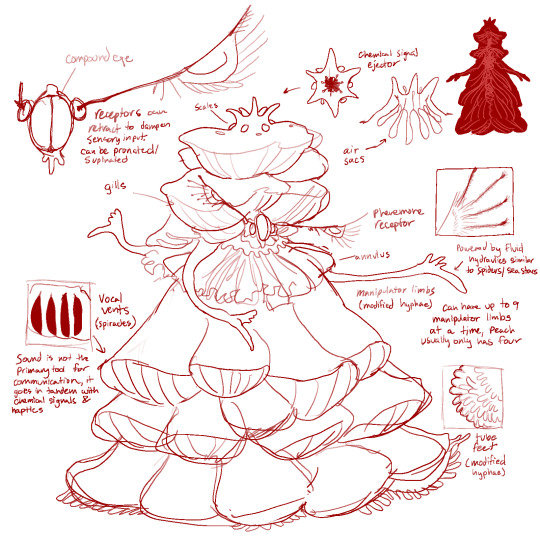

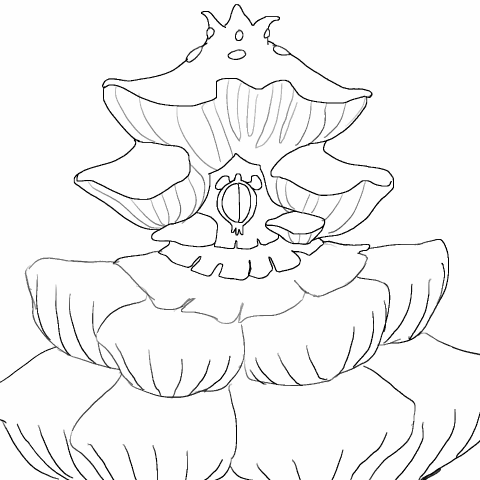
peach
#she’s a fungus symbiote like her subjects#just a little different.#princess peach#smb peach#speculative biology#super mario#aliens#kips art#super speculative bros#art#gif warning
8K notes
·
View notes
Text
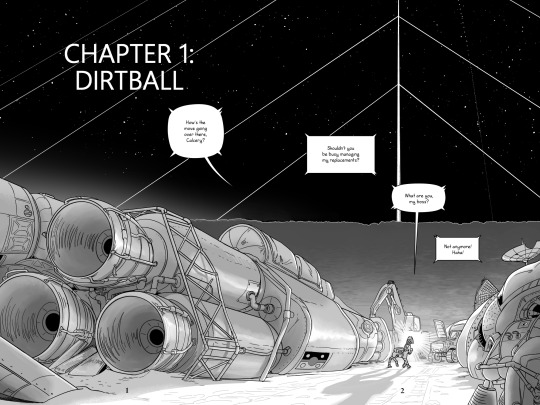


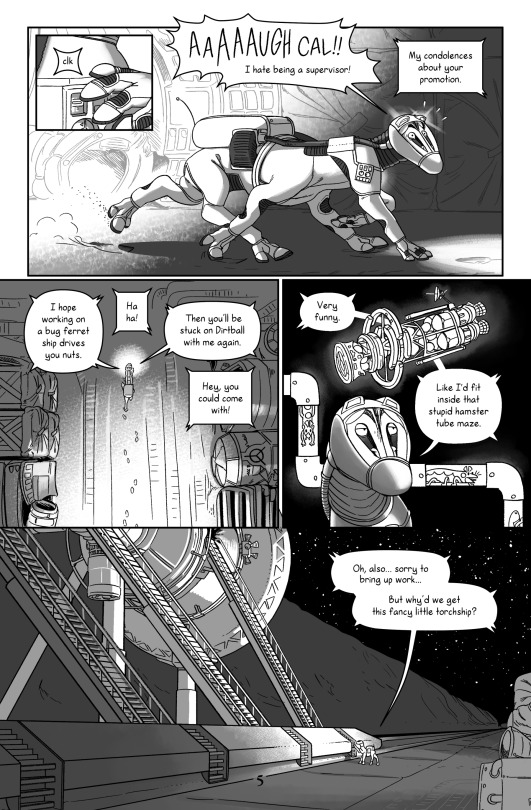
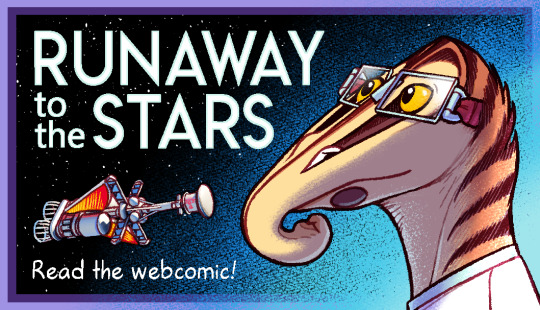
I finally (got help) slapping Wordpress into shape and Runaway to the Stars is now releasing as a public webcomic! Thank you so much for your support over the years, and sticking with me while I'm slowly chewing my way through this book. I'm very excited to share this story! It'll be updating every Tuesday, Thursday, and Saturday thanks to the massive Patreon backlog. Patreon will continue to update as I finish pages, which happens on a sporadic non-schedule.
If you experience bugs with the site report them to me. Some things may occasionally break, as coding problems tend to be a very "whack-a-mole" affair; and I'm still getting used to the interface.
#jayart#comic#webcomic#runaway to the stars#talita#aliens#speculative biology#spec bio#speculative evolution#spec evo#science fiction#scifi#hard scifi#uhhhh i can't think of anymore engagement tags#I'm terrible at advertising things#show your friends! show your dad! show your dog!
7K notes
·
View notes
Text
NEW ALIEN

I call them Ocira. They're a sort of combination of seals and octopus. They're eusocial and very kind
That wrinkly thing on their chest are their gills, which they can use to express certain emotions.
Their "teeth" are truly spines that can be raised to eat meat, or flattened to chomp plants.
To communicate, they do a sort of drumming and pinching of their swim bladders for different tones and squeaks.
They live on an ocean planet, in shallow, warm waters around reefs.
I might draw them more and tell more about them 😸
#art#digital art#orcatnip#xenobiology#spec bio#speculative biology#alien oc#meow#original creature#creature design#sophont
2K notes
·
View notes
Text

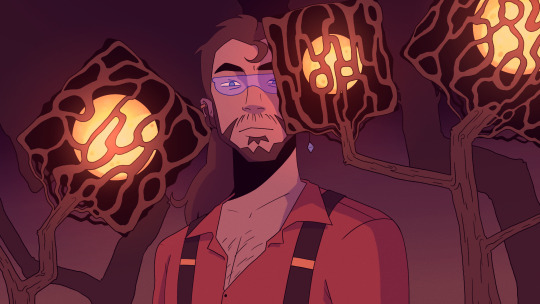


Okay so I need someone who's better at landscapes and art style replication than I am to hop on this idea. because this man and his alien planet biome and storyline were made for the scavengers reign art style fr
#atlas.art#artists on tumblr#mcyt#hermitcraft#hermitcraft 10#rendog#renthedog#scavengers reign#idea that was stuck in my head so bad I finished three full illustrations in a day#these are all screenshot redraws from the show for those who haven't seen it#you should see it by the way. literally one of the coolest pieces of art ever made and I am not exaggerating in the slightest#but yeah. he and his minecraft speculative alien biology were made for this fucking show#I'm actually really happy with how these came out it's been so long since I've tried drawing in a different art style like this
2K notes
·
View notes
Text


Baby birrin and the anatomy of their eggs.
Their eggs have protein caps which are exchanged several times during development.
Color changes let attending birrin know the status of the embryo and when a new cap is needed.
1K notes
·
View notes
Text

A portrait of beloved professor Elias Scrimshaw. Elias is one of the stranger creatures from the species exchange program. An intelligent parasitic entity that can live in and manipulate a host's body for hundreds of years. Elias's species keep active only the bodily systems that are most needed, such as those involved in locomotion and eating. The unessential parts of the body are consumed, often Reducing the host species to what is essentially an animated husk which is kept preserved with a special cocktail of antibacterial fluids produced in Elias's strange asymmetric body. His preferred field of study deals with the biomechanics and life cycles of extraterrestrial parasites. His unique perspective and insight has offered great leaps in interstellar medicine by helping provide treatments for rare and often deadly parasitic infections. Not wanting to offend his host planet he took over the form of a stray cat which he assumed to be a local source of food before realizing it was in fact a common household pet. He has since expressed his deepest apologies for this mix up and has advised cat lovers to perhaps reconsider taking his class.
#my art#illustration#character design#creature design#alien creature#alien#scifi art#science fiction#parasite#cat#space#early 1900s#vest#buttons#books#zombie#undead#biology#speculative biology#speculative zoology#speculative evolution#spooky#scary#halloween
4K notes
·
View notes
Text
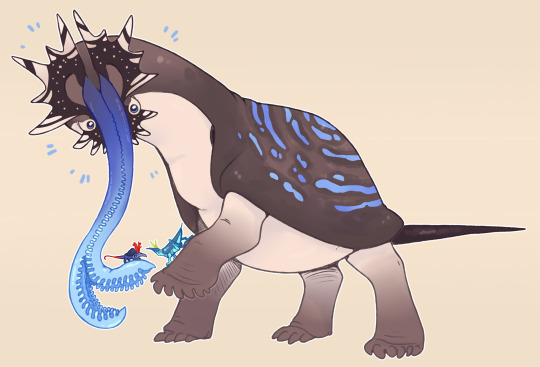
NEW ALIEN AGAIN! This one I wanted to stick to being more Earth inspired, connecting with my roots. I'm calling 'em Styraphants cause they're mostly a mix of styracosaurus, elephant, and mollusk of course. Trying to make a quad walking sophont always lends to kind of a centaur-ish body plan, so tried to think outside the box for appendages this go around. They've got a pair of trunk tentacles around their mouth that they use as their hands, which have a fleshy 'zipper' to slot together at rest. They also smell/taste with them so gloves are a very popular purchase.

Oh also! Their eyes are on little stalks that peak out around their frill, they can hide them away if scared. Also all the fellas pictured here are gals! They have a male/female system in keeping with the Earthling megafauna theme.
#art#worldbuilding#speculative biology#spec bio#styraphant#alien#xenobiology#fleshing out existing critters<makin new ones#it is a curse
1K notes
·
View notes
Text
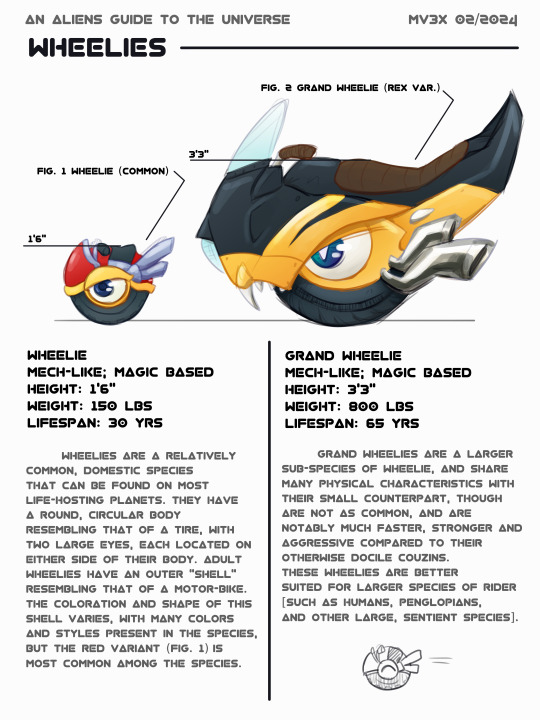

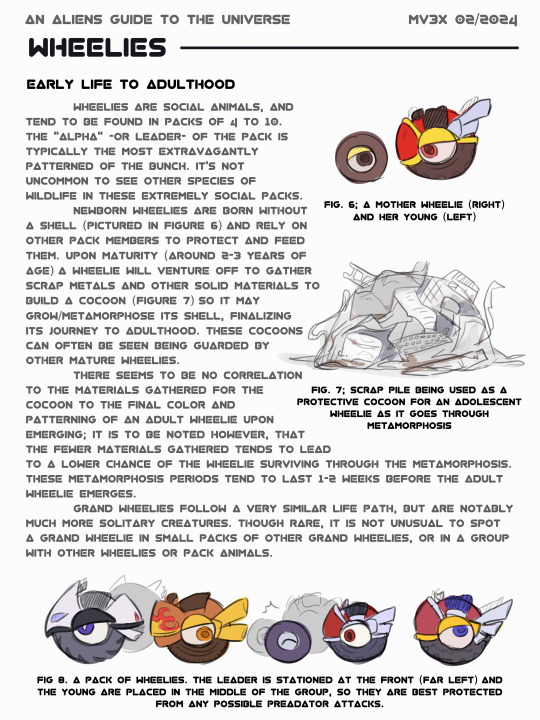
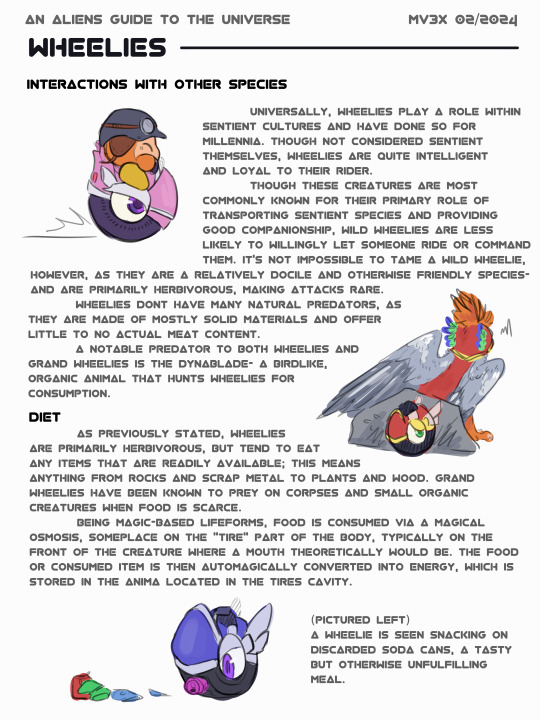
I love speculative biology so much you would not believe..
yall should suggest which kirby species I should do next... jk jk... unless???
2K notes
·
View notes
Note
if youre still taking requests - Draw a cool species youve seen in the spec bio community mayhaps?

Enamoured by @sparrowlucero's space whales
#they're so fun#i love their gnarly teeth and fins. sick as hell#doodle requests#my art#art#spec bio#speculative biology#alien#spec evo#sketch
2K notes
·
View notes
Text

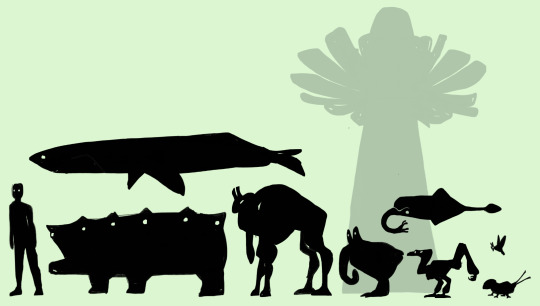
Contemplating my aliens again, most of which desperately need names.
907 notes
·
View notes
Text
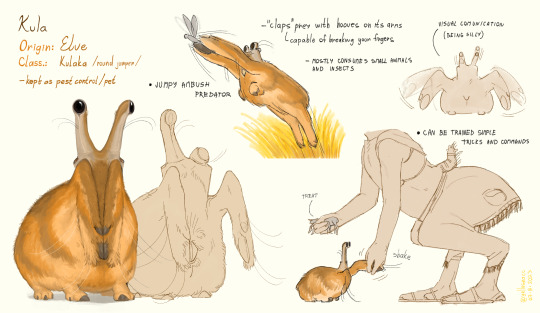
Kula!
A popular domesticated animal of slomen.
Kula are adapted for grassy areas with lots of small prey. In the wild, they either jump after flying or jumping prey or wait at burrows before smashing their prey with their hooves. If the smash isn't enough they hold it to their beak and finish it. Some species are more specialized to wait while others to jump. The domesticated Kula is speculated to be one of the more energetic hunters, mostly interested in 'insects'.
In ancient times wild Kula were attracted to sloman settlements as they would also attract prey with the slomans' food and light.
The slomen would soon learn that Kula were not pests since the wild animals were yet to be spoiled by premium meat cuts and preferred fresh moving meat that the slomen didn't want around.
In current times many cultures keep these animals as pest control on farms and in larger houses. They can be commonly seen in underground rooms that serve as food storage but for a healthy mental state, they need time on the sun.
While in the wild they are usually solitary or in small groups, Kula have a complex body language that they use to express their mood and/or needs. This can be very cute and funny, helping them become as loved as they are.
Many owners will grow to care deeply for their Kula but some cultures recognize them directly as pets. In the high-ranking societies of these cultures, pet Kula get even rounder. Often a certain trait is popular in a culture, resulting in localised breeds with different shapes and colors.

Some little goober possibilities - not entirely canon
In a few places, Kula are also part of a religion and have their own shrines.
#art#speculative biology#artists on tumblr#digital art#artwork#worldbuilding#speculative evolution#fantasy#spec bio#original alien species#original species#spec evo#speculative zoology#xenobiology#domesticated animals#slomen
2K notes
·
View notes
Text
Centaurism is when over many generations, a pair of front limbs goes from being used for support and locomotion to being permanently held off the ground for grasping, object manipulation, or other purposes. Basically turning a pair of front feet into a pair of hands.
Having four legs is often considered to be the ideal number for large animals, being very stable and resource efficient.
Therefore, it stands to reason that intelligent aliens with six limbs (4 legs, 2 hands) or more would be very common, and tool use on planets where the equivalent to Earth's vertebrates have 6 legs would be much more common among species than it is on Earth.
Aliens would be astounded by our ability to balance on merely two feet and our incredible flexibility. They would also be fascinated that some species of birds of all things figured out how to use tools.
"How did your raven use the key card?! Its front limbs are wings! Its back limbs are legs! It doesn't have hands!"
"She used her mouth."
"Ohhhhhhhhhh... Amazing."
#speculative biology#humans are weird#humans are space orcs#humans are space fae#alien: this is a four hand job#human: actually it's just a two hand job#human who's an upper limb amputee: actually you only need one hand
3K notes
·
View notes
Photo
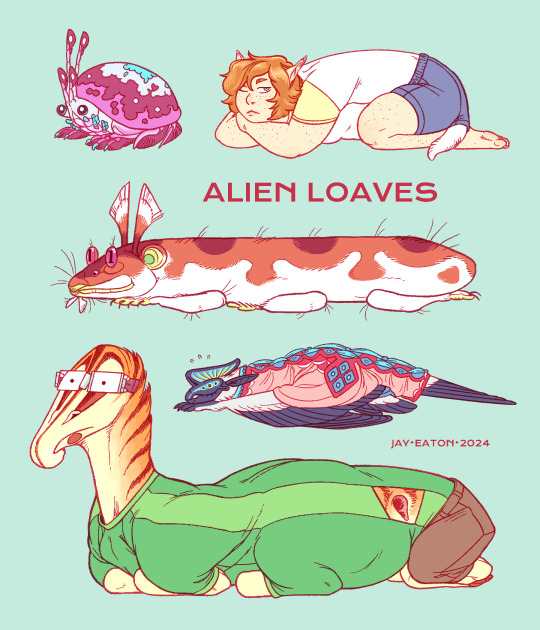
Freshly baked breads from various planets. Some aliens are better at tucking up all their limbs than others. And yes I have Gillie the GMO catgirl standing in for humans, she's close enough.
4K notes
·
View notes
Text
If Wompers from my project (Land Of Borease) where selectively bred like todays dog breeds.
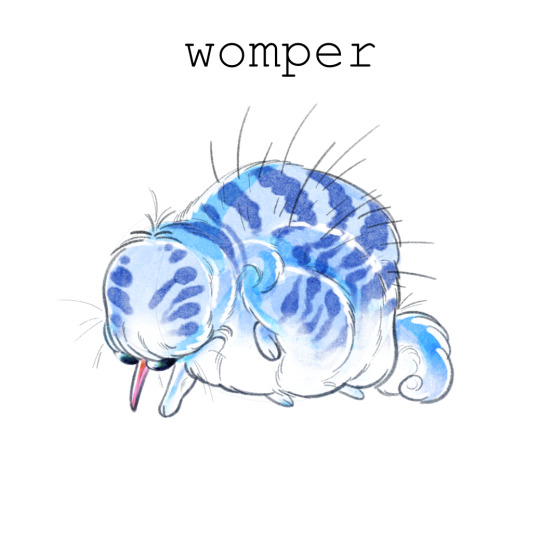
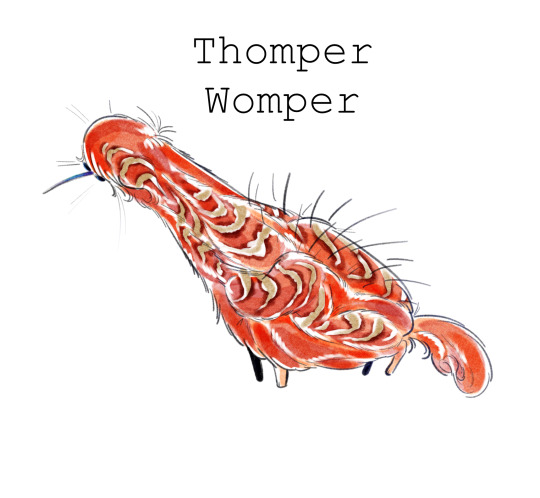


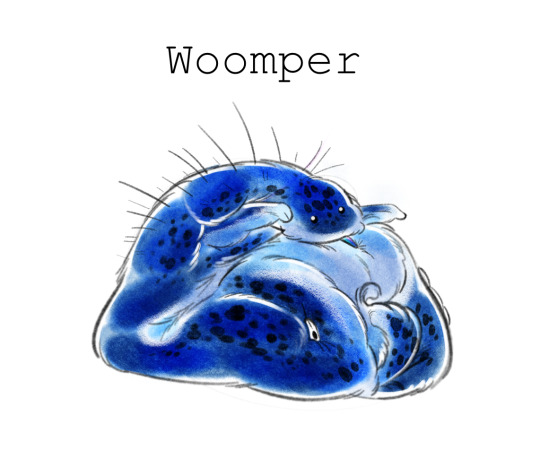
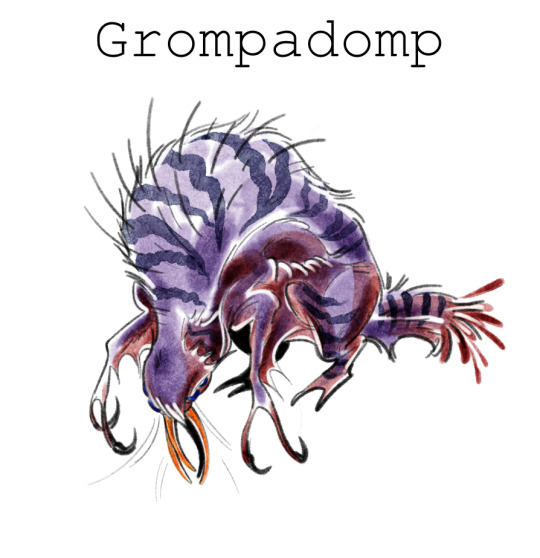
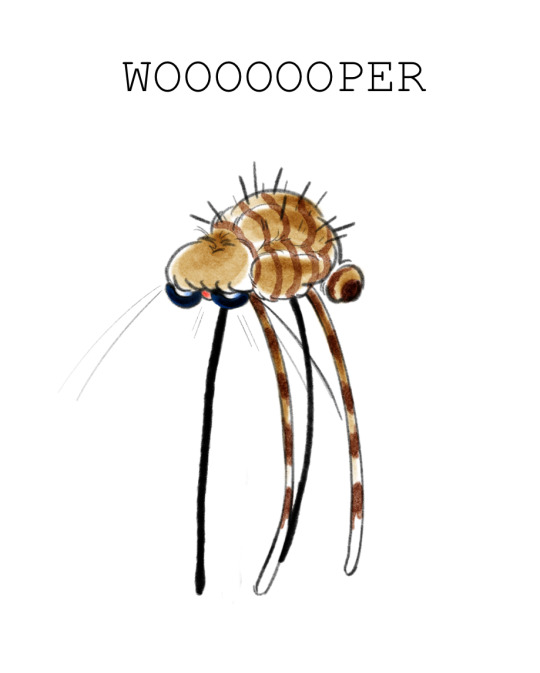
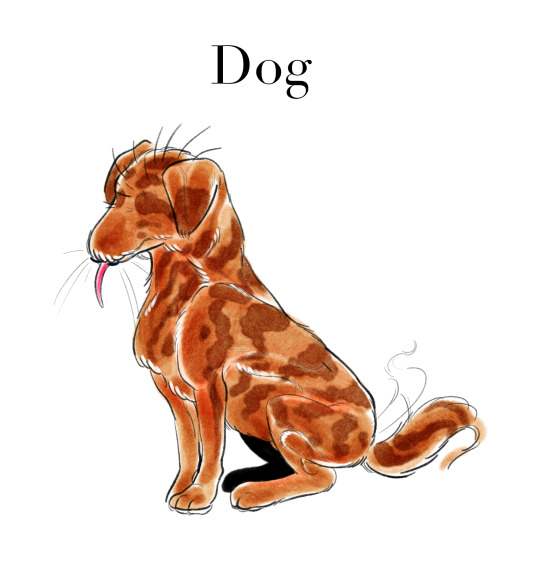
#xenobiology#alien species#spec bio#spec evo#speculative biology#speculative evolution#speculative ecology#speculative fiction#artists on tumblr#speculative worldbuilding#land of borease
928 notes
·
View notes
Text

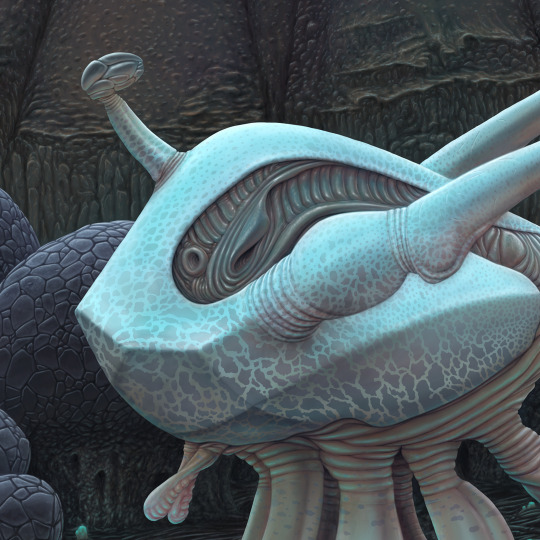
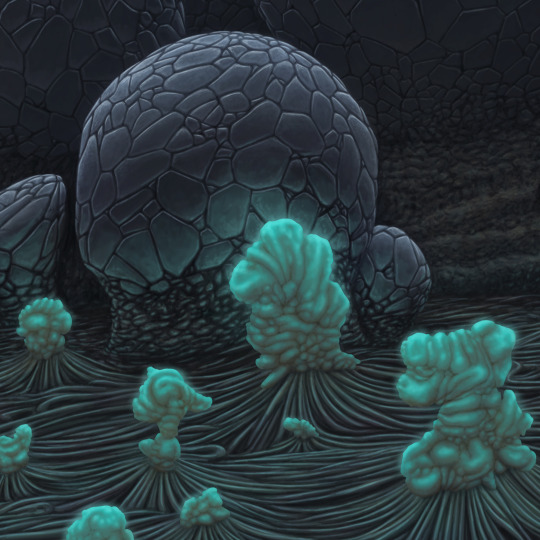

In the Shadow of Colossus
Veteris is a geologically dynamic world, with active plate tectonics that thrust huge mountains high into the sky. One of the highest ranges is Colossus, which contains peaks well over 50,000 feet tall. Here on its outskirts, deep valleys have formed, whose unfortunate position robs them of sunlight for most of the daytime.
These twilight conditions are not favorable for creatures with high photosynthetic needs, but provide opportunities for others. The ominous Valley Plate-globes are covered in dark panels that absorb as much sunlight as possible during the short daylight hours. Rising far above the ground are the Skycolumns, who extend their fleshy fronds when the sun is directly overhead. Their main body column is heavily buttressed to prevent being toppled by strong winds.
The particular species of tube carpet that covers the valley floor grows a large glowing bulb which carries a multitude of its microscopic embryos. Once the bulb reaches a certain size and luminosity, it attracts the attention of mobile creatures, who by eating it spread the tube carpet’s offspring far and wide. The primary patron at this bioluminescent buffet is the Ghost Celeriarma, a swift and well-defended denizen of the shadow lands. Like many inhabitants of Veteris, it utilizes a combination internal/external support structure that is both flexible and strong. A turret of eyes extends high above the rest of its body and gives it 360 degree surveillance capability. If eyesight should fail to detect a predator, its quick speed and sharp, moveable spines may keep it safe.
A far less athletic creature, the smaller Pluriped has instead developed camouflage to avoid predation. Lateral markings and a glowing bulbous growth of its own help it blend in to the shadowy sea of tube carpet.
#art#space#alien#creature#artist#creature design#exobiology#speculative evolution#speculative biology#astrobiology#worldbuilding
688 notes
·
View notes